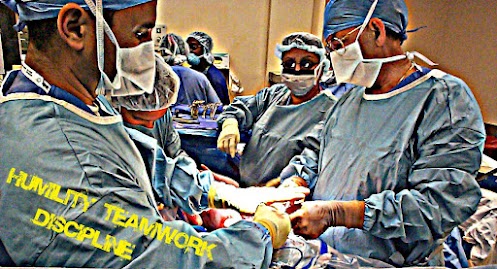What if there was a technique to reduce surgical complications by 35% and fatality rates in surgery by 47%…across the board…all surgeries, all over the world, no matter what kind of hospital in whatever country?
And what if I told you that this technique has been tried and tested in multiple sorts of surgical centers…and it works in a hospital in rural Tanzania just as well as an urban hospital in Seattle? It works.
And what if I told you that this technique is low tech and only costs as much as a piece of paper? It exists, and its real and it’s readily available.
And what if I told you that this technique exists, tried and tested, and its success is undeniable…and it’s not spreading…it’s not being adopted. Surgical centers around the world are choosing not to use a simple technique that would reduce surgical complications by 35% and reduce fatalities by 47%…what would you say if I told you that?
Dr. Awul Gawande spoke recently at TED, outlining how health care researchers went to high risk industries like the aviation business and skyscraper construction and asked them what they did to manage risk.
Technology and training are important…but what is vital…what makes the real difference in those high risk fields are checklists. Checklists that review key components at moments called “pause points”, allowing the team to be “on the same page” and have key components familiar and available to the team to allow the team to function effectively and efficiently, even if an unexpected crisis should come up.
So, noting how check lists have made high risk industries safer, technicians from high risk industry came in to examine surgical procedures and after considerable research, developed checklists to be reviewed…one when the patient enters the room, one just before surgical incision, and one just before the patient leaves the operating room.
Checklists were tools to help make experts better. They made a recipe to prepare a team that is prepared for the unexpected…like making sure everyone in the room had introduced themselves at the start of the day.
Simple, huh? That was one component of the first checklist: The entire surgical team introducing themselves to each other. Basic…almost too easy. But, makes sense that it would help in a crisis if everyone knew who was who if things get dicey later on.
The surgical procedure checklist, as successful as it is, has been slow to catch on.
The thought it’s been slow to be adopted widespread because it forces the team to acknowledge that up to now they haven’t been working as a system. It forces the team to acknowledge that each member of the team needs to work as part of a system…that all are key components of “being on the same page”.
It forces the team to operate values of humility, teamwork, and discipline. It forces individuals to be vulnerable with each other, it would require the physician to regularly and frequently acknowledge that this is a team effort, and that the greatest success occurs when all pull together to contribute.

That goes contrary to the values of medicine which up to now have been independence, self-sufficiency and autonomy…values which helped mavericks forge new frontiers that created startling innovations in medicine. We might not have penicillin, small pox vaccine and organ transplants without some maverick cowboys going out on a limb against the wisdom of all their colleagues.
But independence, self sufficiency and autonomy don’t work well when a system needs to work together for the good of one patient.
“Having great components is not enough. And yet we’ve been obsessed in medicine with great components. We want the best drugs, the best technologies, the best specialists, but we don’t think too much about how it all comes together. It’s a terrible design strategy actually. There’s a famous thought experiment, and it touches exactly on this. That is, what if you built a car from the very best car parts? Well, it would lead you to put in Porsche brakes, a Ferrari engine a Volvo body, a BMW chassis. And you put it all together, and what do you get? A very expensive pile of junk that doesn’t go anywhere.”
Bottom line…having the effective, quality, even top-of-the-line core components is not enough for a good result. Team work is required.
Reminds me of my work with couples…I work with great individuals who are incredible people. They do fabulous work in the community, with their peers, in their careers, with their children. But their ability to operate effectively as a system of two when processing in-laws, chores, the budget or _____________ (fill in the blank here) can be poor.
So…it has me wonder what it would be like if the discussion was headed into “disagreement territory” if it wouldn’t be possible to have a pause moment and run through a checklist…something like:
- Are we each assured of the other’s underlying love and commitment as we head into this discussion?
- Will we each work to remember to keep the discussion on the decided topic and not slip into character slander, low blows, or dredging up old issues in a mudslinging sort of way
- Do we both have sufficient energy right now to be able to be vulnerable ourselves and extend grace to the other?
Do you have ideas of other basic items that would be good for a couple’s checklist to be reviewed prior to a loaded conversation? Let me hear them. Leave them as a comment, or let us know via our contact page on this website. We at Bergen and Associates Counselling would love to hear your ideas!






Write a Comment